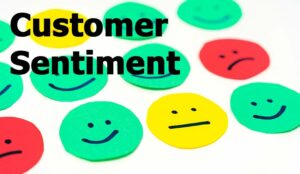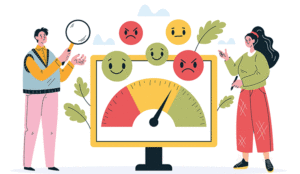What Is Customer Sentiment?
Sentiment refers to the overall thoughts, views, or attitudes a person has about something.
Customer sentiment is not unlike sentiment held or expressed by a person towards any other person, place, or thing that they interact with. In this case, however, it refers more specifically to a brand, product, or service.
It’s closely related to emotion, which is more granular, inward-facing, and centred on the feelings individual customers experience.
Unlike similar concepts, such as customer satisfaction or net promoter scores (NPS), customer sentiment is inherently ambiguous.
The sentiment someone has towards your brand cannot be rated on a sliding scale in the same way that their satisfaction with an interaction can; it’s typically represented as either positive, negative or neutral. However, customer sentiment can be monitored and improved.
Both direct and indirect customer sentiment are important to keep track of if you aim to maintain a positive brand perception or expand as a company. The two forms are similar, but they manifest in different settings and scenarios.
Direct Customer Sentiment
Direct customer sentiment is arguably rarer than indirect sentiment as it involves a customer directly contacting your company to air their concerns, either in response to outreach on the part of your business or unsolicited.
In any event, this form of customer sentiment is best taken seriously, as customers must be fairly motivated to make an effort to explain their feelings to your brand.
Indirect Customer Sentiment
Indirect customer sentiment is a lot like direct customer sentiment in that customers are acting on a need to express their feelings about a brand. However, instead of directing their statements toward the brand in question, they choose to voice their concerns (or praises) publicly.
Nowadays, that generally translates to posting on social media and engaging in conversations online. This can be a great thing when customers are simply enthusiastic about a brand they adore, but it can become a PR nightmare for companies caught in the crosshairs of disgruntled customers making their grievances known far and wide.
Contributed by: CallMiner
Author: Robyn Coppell
Reviewed by: Megan Jones
Published On: 26th Jan 2023 - Last modified: 25th Sep 2025
Read more about - Definitions, CallMiner, Terminology









































